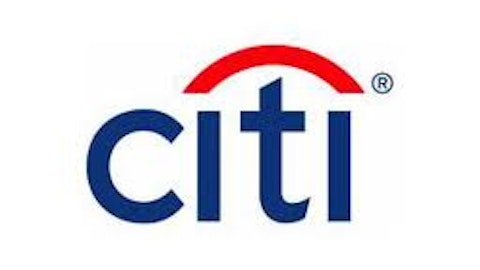
Source: Andrew Magill, Flickr.
Every individual likes to see themselves as unique. Banks are no different.
Read through any presentation or earnings release from a major lender, and you’ll come across an extended conversation about their culture and what distinguishes them from the pack.
But when all is said and done, and not unlike certain cliques in high school, the very attempts to separate themselves are often what make different institutions look so alike.
Investors and analysts were given a textbook example of this at last week’s Barclays Global Financial Services Conference, at which many of the nation’s leading financial companies presented.
If there was one theme underlying all of the presentations, it was revenue diversification — and an obsession with fee income in particular.
“The diversity of the businesses that we have has allowed us to not only benefit from that recurring stream of net interest income from our deposit gathering capabilities and our lending capabilities, which has led to fee income … which was just over 50% during the second quarter of 2013.” Bruce Thompson, CFO of Bank of America Corp (NYSE:BAC).
“Our persistent performance reflects our strong revenue diversification with a 50/50 split between spread and fee income. … We’ve outperformed our peers on fee income to average assets in both the second quarter and over the past 10 years, reflecting our diversified sources of fee income.” Timothy Sloan, CFO of Wells Fargo & Co (NYSE:WFC).
“[T]his is the right time for us to really be focusing on fee income.” William Demchak, CEO of PNC Financial Services Group Inc (NYSE:PNC).
“Fee income is strong, substantially stronger than our peers at 44%.” Kelly King, CEO of BB&T Corporation (NYSE:BBT).
“Fee income represents about 46% of our total revenue. … The diversity of our fee businesses and its overall relative contribution to revenue is a key factor in our historic and currently relatively high profitability.” Kevin Kabat, CEO of Fifth Third Bancorp (NASDAQ:FITB).
“Key derives over 40% of our total revenues from fee-based businesses. … Our broad product set, industry expertise and targeted approach allow us to do more for our clients, winning more of their business and taking share in the market as evidenced by commercial loan growth and certain fee income categories.” Donald Kimble, CFO of KeyCorp (NYSE:KEY).
All of these executives have hit on the same problem, though: Net interest income, the other primary component of a bank’s revenue, will be difficult if not impossible to grow over the foreseeable future.
“Assuming no significant changes in interest rates,” PNC Financial Services Group Inc (NYSE:PNC)’s Demchak noted, “we expect core net interest income — that is, net interest income other than purchase accounting accretion — will be difficult to grow.”
The net result is that, while analysts and commentators have chastised the complexity of banks over the last few years, and lenders like Bank of America Corp (NYSE:BAC) have even taken considerable strides to simplify their operations, the obsession with fee-based revenue diversification demonstrates that, for better or for worse, we are far from returning to a world of slimmed-down, traditional banking.
The article What Every Bank Wants Investors to Know originally appeared on Fool.com is written by John Maxfield.
John Maxfield owns shares of Bank of America. The Motley Fool recommends Bank of America and Wells Fargo. The Motley Fool owns shares of Bank of America, Fifth Third Bancorp, KeyCorp, PNC Financial Services, and Wells Fargo.
Copyright © 1995 – 2013 The Motley Fool, LLC. All rights reserved. The Motley Fool has a disclosure policy.




